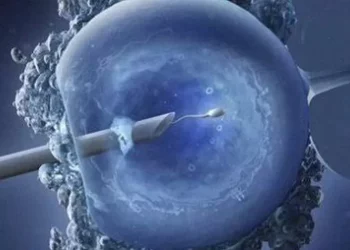Infertility is a challenge that affects many couples and individuals. For those who wish to conceive, in vitro fertilization (IVF) offers a promising solution. However, the cost of IVF can be a significant concern. This article aims to provide a detailed overview of IVF costs in the USA, breaking down the various factors that contribute to the overall expense.
Understanding IVF
IVF is a complex process that involves multiple steps. It begins with ovarian stimulation to produce multiple eggs. These eggs are then retrieved and fertilized with sperm in a laboratory. The resulting embryos are cultured and monitored for a few days before one or more are transferred to the uterus. This process can be repeated if necessary.
Initial Consultation and Diagnostic Tests
The first step in the IVF journey is the initial consultation with a fertility specialist. During this visit, the doctor will review your medical history, perform a physical exam, and order diagnostic tests. These tests typically include blood work, ultrasound scans, and sometimes more specialized tests like hysterosalpingography (HSG) or saline sonograms.
The cost of the initial consultation can range from $200 to $500. Diagnostic tests can add another $1,000 to $3,000 to the total cost. Insurance may cover some of these expenses, but coverage varies widely.
Ovarian Stimulation and Monitoring
Once the initial evaluation is complete, the next step is ovarian stimulation. This involves taking medications to stimulate the ovaries to produce multiple eggs. The most common medications used are gonadotropins, which include follicle-stimulating hormone (FSH) and luteinizing hormone (LH). These medications can be quite expensive, typically ranging from $2,000 to $5,000 per cycle.
Monitoring during this phase is crucial. It involves regular blood tests and ultrasounds to track the development of the follicles. Monitoring costs can add another $1,000 to $2,500 to the overall expense.
Egg Retrieval
When the follicles are ready, the eggs are retrieved through a minor surgical procedure. This is done under sedation and involves using a needle to aspirate the eggs from the ovaries. The cost of the egg retrieval procedure typically ranges from $3,000 to $5,000. This includes the fees for the operating room, anesthesia, and the physician’s services.
Fertilization and Embryo Culture
After the eggs are retrieved, they are fertilized with sperm in the laboratory. There are two main methods of fertilization: conventional insemination and intracytoplasmic sperm injection (ICSI). ICSI involves injecting a single sperm directly into an egg and is often used when there are male factor infertility issues.
The cost of fertilization and embryo culture can range from $1,000 to $3,000. If ICSI is required, it can add an additional $1,000 to $2,000 to the cost.
Embryo Transfer
The final step in the IVF process is the transfer of the embryo(s) to the uterus. This is a relatively simple procedure that does not require anesthesia. The cost of the embryo transfer procedure typically ranges from $1,000 to $2,000.
Cryopreservation and Storage
Not all embryos are transferred in a single cycle. Some may be cryopreserved (frozen) for future use. The cost of cryopreservation can range from $500 to $1,000 for the initial freezing, with annual storage fees of $200 to $1,000.
See Also: Does Chemotherapy Affect Male Fertility?
Additional Costs and Considerations
There are several additional costs and considerations that can impact the overall expense of IVF. These include pre-implantation genetic testing (PGT), donor eggs or sperm, surrogacy, and travel expenses.
Pre-implantation Genetic Testing (PGT)
PGT is used to screen embryos for genetic abnormalities before transfer. This can be particularly important for couples with a history of genetic disorders or recurrent pregnancy loss. The cost of PGT can range from $3,000 to $7,000, depending on the number of embryos tested.
Donor Eggs or Sperm
In some cases, donor eggs or sperm may be needed. The cost of using donor eggs can range from $10,000 to $20,000, while donor sperm typically costs between $300 and $1,000 per vial.
Surrogacy
For individuals or couples who cannot carry a pregnancy, surrogacy may be an option. The cost of surrogacy can be substantial, often ranging from $50,000 to $150,000. This includes compensation for the surrogate, legal fees, and medical expenses.
Travel Expenses
For those who do not live near a fertility clinic, travel expenses can add up. This includes transportation, lodging, and time off work. The total cost will vary depending on the distance and duration of the stay.
Insurance Coverage
Insurance coverage for IVF varies widely in the USA. Some states have mandates that require insurance companies to cover infertility treatments, while others do not. Even in states with mandates, coverage can vary significantly from one plan to another.
States with Infertility Insurance Mandates
As of now, 19 states have some form of infertility insurance mandate. These states are Arkansas, California, Connecticut, Hawaii, Illinois, Louisiana, Maryland, Massachusetts, Montana, New Jersey, New York, Ohio, Rhode Island, Texas, Utah, and West Virginia. However, the specifics of the mandates vary. Some require coverage for IVF, while others do not.
Employer-Provided Insurance
Some employers offer insurance plans that include coverage for infertility treatments, including IVF. It is important to review your insurance policy carefully to understand what is covered and what is not. Some plans may cover diagnostic tests and medications but not the IVF procedure itself. Others may have lifetime maximums or limit the number of cycles covered.
Out-of-Pocket Costs
For those without insurance coverage for IVF, the out-of-pocket costs can be substantial. It is important to plan and budget for these expenses. Many fertility clinics offer financing options to help manage the cost. Additionally, there are organizations and grants available to help offset the cost of IVF for those who qualify.
Cost Breakdown by Cycle
To better understand the total cost of IVF, it can be helpful to look at the expenses on a per-cycle basis. On average, a single IVF cycle in the USA can cost between $12,000 and $15,000. This estimate includes the basic components such as the initial consultation, diagnostic tests, ovarian stimulation, egg retrieval, fertilization, embryo culture, and embryo transfer.
However, this estimate does not include additional costs such as medications, PGT, cryopreservation, and donor eggs or sperm. When these additional expenses are factored in, the total cost can easily exceed $20,000 per cycle.
Success Rates and the Cost of Multiple Cycles
It is important to note that the success rates of IVF vary depending on several factors, including the age of the woman, the cause of infertility, and the quality of the embryos. According to the Society for Assisted Reproductive Technology (SART), the average success rate for a single IVF cycle is around 30% to 40% for women under 35. The success rate decreases with age.
Because the success rate of a single cycle is not 100%, many couples and individuals require multiple cycles to achieve a successful pregnancy. The cost of multiple cycles can add up quickly. For example, if three cycles are needed, the total cost can range from $36,000 to $45,000, not including additional expenses.
Ways to Reduce IVF Costs
While the cost of IVF can be high, there are several strategies that may help reduce the overall expense:
Insurance Coverage: Check if your insurance plan covers any aspects of infertility treatment. Even partial coverage can significantly reduce costs.
Grants and Scholarships: Look for grants and scholarships specifically for infertility treatment. Organizations such as the Baby Quest Foundation and the Cade Foundation offer financial assistance to those undergoing IVF.
Clinical Trials: Some fertility clinics participate in clinical trials that offer reduced-cost or free IVF treatment in exchange for participating in research studies. This can be a good option for those who qualify.
Medication Discounts: Look for discounts and rebate programs offered by pharmaceutical companies. Some programs offer significant savings on fertility medications.
Shared Risk Programs: Some fertility clinics offer shared risk programs, which provide multiple IVF cycles for a single, upfront fee. If the treatment is not successful after the specified number of cycles, a portion of the fee may be refunded.
Traveling for Treatment: Consider traveling to a clinic in a different state or country where the cost of IVF may be lower. However, it is important to factor in travel expenses and ensure the clinic has a good reputation.
Conclusion
The cost of IVF in the USA can be substantial, but understanding the various components and factors that contribute to the overall expense can help in planning and budgeting for the treatment. From the initial consultation and diagnostic tests to ovarian stimulation, egg retrieval, fertilization, embryo culture, and embryo transfer, each step comes with its own costs.
Additional expenses such as medications, PGT, cryopreservation, and the use of donor eggs or sperm can further increase the total cost. Insurance coverage varies widely, and out-of-pocket expenses can be significant. However, there are several strategies that can help reduce the overall cost, including insurance coverage, grants and scholarships, clinical trials, medication discounts, shared risk programs, and traveling for treatment.
Ultimately, the journey through IVF can be challenging, both emotionally and financially, but it offers hope to many who dream of starting or expanding their families. By being informed and prepared, individuals and couples can navigate the financial aspects of IVF and make informed decisions about their fertility treatment options.
Related Links:



























